One of the delights of walking around my neighbourhood is the contrast between the cerulean sky of a Tokyo winter and the burnished orange of the fruit still hanging on many trees: persimmons.
Strictly speaking, they are a late autumn fruit. But the warmer autumns that we’ve been getting seem to have shifted the persimmons’ season well into January. The birds certainly appreciate them. And now I know what the tiny mejiro feasts on before the plum blossom arrives in February.
Walking out the other day, I saw some of the local persimmon trees still full of fruit. But I then noticed a tree with just one persimmon hanging on it. I was tempted to reach out and touch its smooth surface. Maybe I could even pluck it from the branch and sink my teeth into its skin of orange alabaster?
In fact, this might have been welcomed by the owners. A solitary persimmon is a 木守り, or "kimori,” tree guardian. 1 The practice of leaving one persimmon (or sometimes a few) on the tree at the end of the harvest is called “kimori no kaki” and is an old one in Japan. 2
Explanations for why this is done vary, but they include a wish for a good harvest next year, a thank you to the tree, a gift to the birds, and an offering to any weary traveller who might chance along. I especially love the idea of being refreshed by a persimmon as I pass in the shade of a garden wall on a long walk through the suburbs. But the main beneficiaries seem to be the birds.
Persimmons, like plums, have deep cultural roots in Japan and are symbols of good luck and longevity. Around this time of year, they are frequently given as gifts in their dried form, or “hoshikaki.”
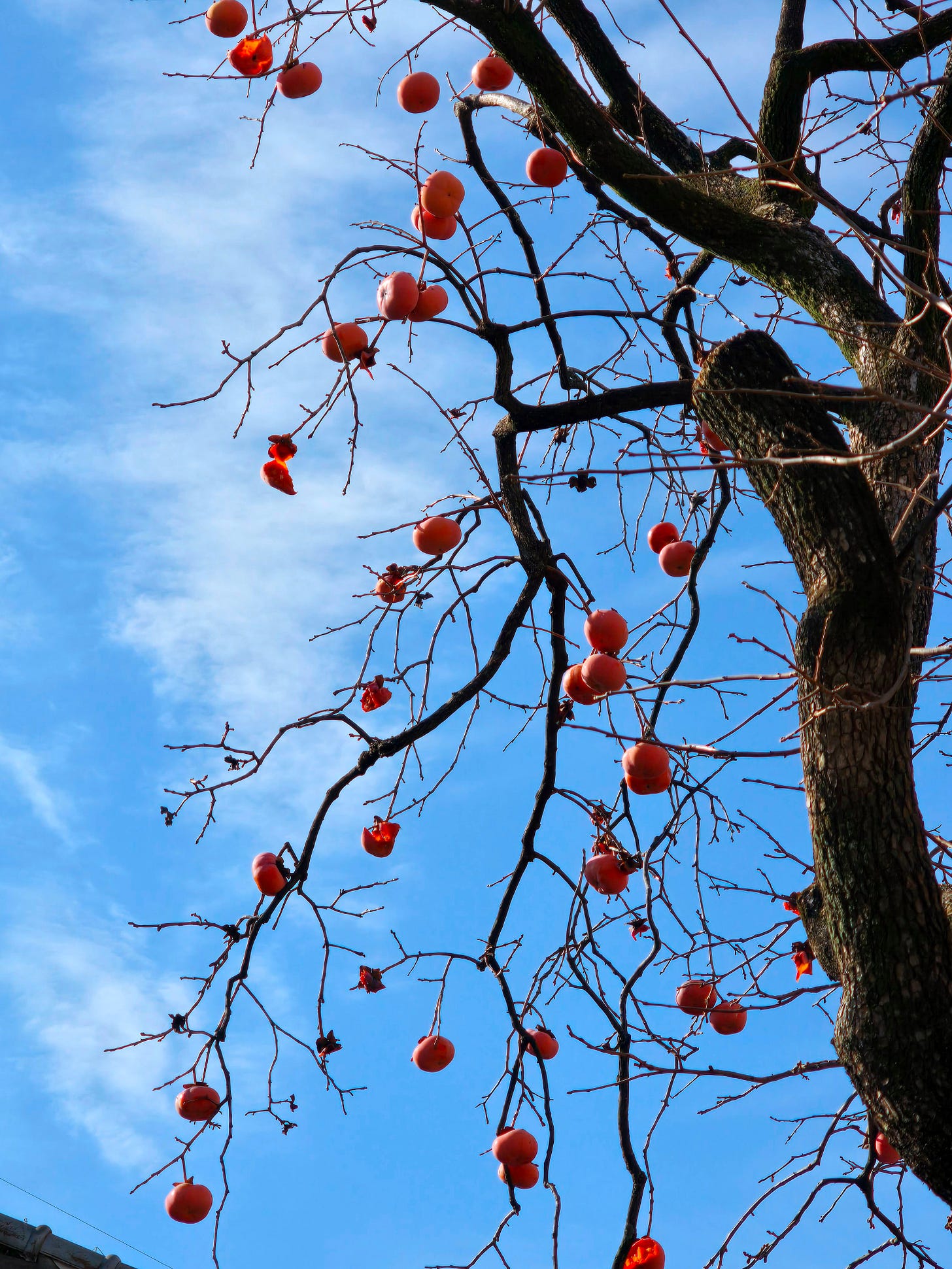
Paintings are a key part of persimmon culture, and I have included some in this post. In fact, the most famous example, usually known as Six Persimmons, is actually Chinese in origin. This celebrated painting is generally put on display in Kyoto only once a year, though it did visit San Francisco in 2023.
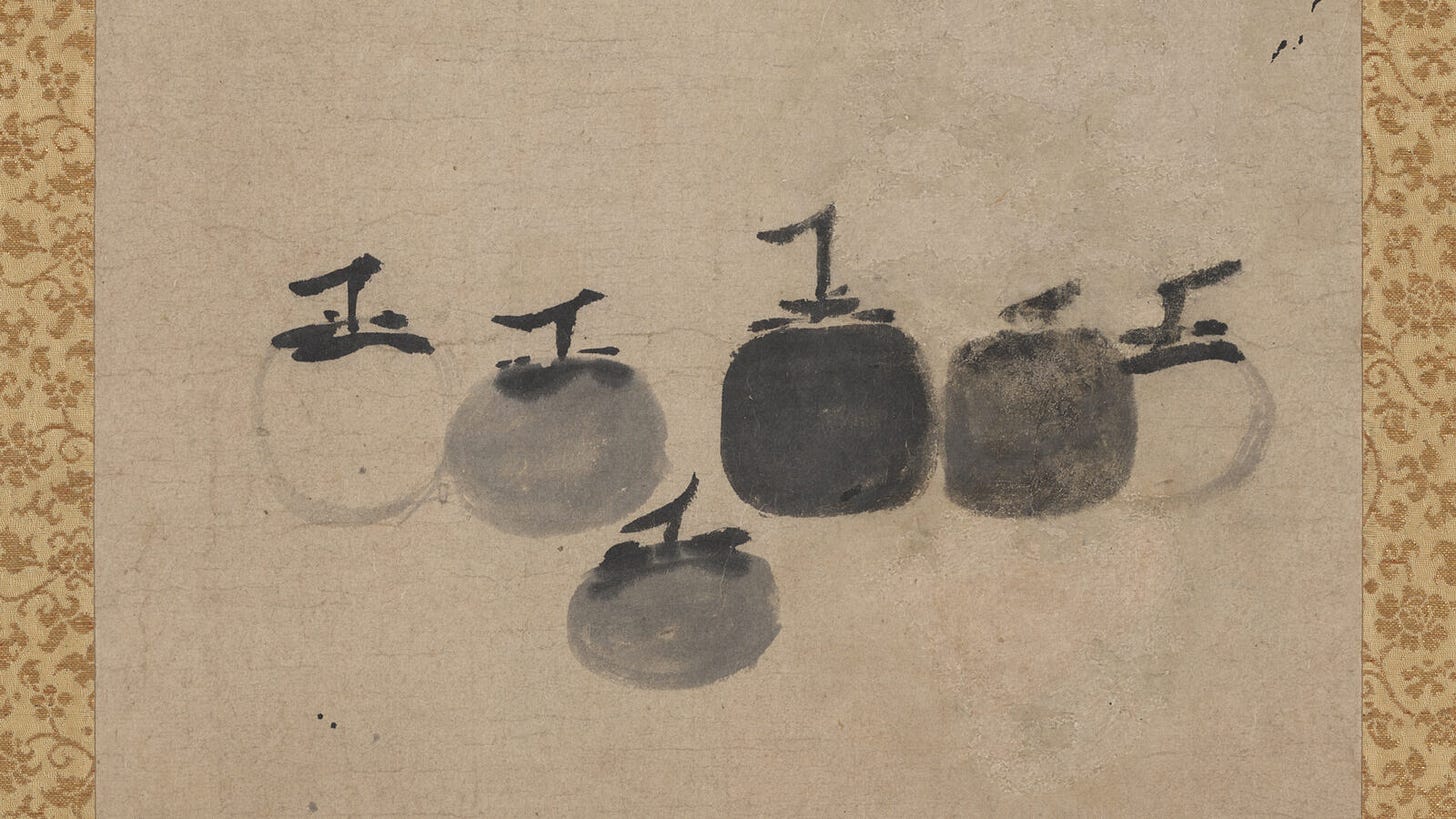
The numerous haiku written by prominent Japanese poets are also part of the persimmon’s cultural influence. 3 Among them are several by Masaoka Shiki (正岡 子規, 1867–1902), considered one of the four masters of the haiku form. Shiki, a friend of Natsume Soseki, suffered from illness for much of his short life. Nevertheless, he left behind a body of work that is hugely admired in Japan and beyond. His poems on persimmons are among his most famous, and none more so than this one:
I bite into a persimmon
and a bell resounds—
Hōryūji 4
Another famous writer of haiku from a much earlier period was Fukuda Chiyo-ni (1703–1775). Persimmons are sweet when ripe but are known for their astringency when not (this also depends on the variety). In a poem commonly attributed to her, Chiyo-ni uses this quality of the fruit to write a very different kind of persimmon haiku, apparently about her engagement:
Will it be bitter,
the first time I bite
an unripe persimmon? 5
As I continued my walk past the old orchards of northern Tokyo under the January sun, I saw the fruit scattered like poems of light against the sky. I thought of Shiki, who wrote an elegantly modest epigraph for himself. And as the shadows deepened in the winter gardens, I recalled his lines:
Tell them
I was a persimmon eater
who liked haiku 6
Or “kimamori.” There are different readings of the word. The term is sometimes applied to other fruit. Incidentally, one of the ways to write “gecko” in Japanese has the same Chinese character: 家守 "yamori,” or “house guardian.”
“Tree-guarding persimmon.”
For more on persimmons and haiku, I recommend this excellent blog.
Translation by Janine Beichman, taken from here. The last line is sometimes rendered in English as “Horyuji Temple.” But “Ji” means temple, and I think adding the word in English detracts from the rhythm and harmony of the piece, so exquisite in the Japanese.
Translation by Michael R. Burch, taken from here. It’s not sure if Chiyo-ni, also known as Kaga-no Chiyojo, ever got married.


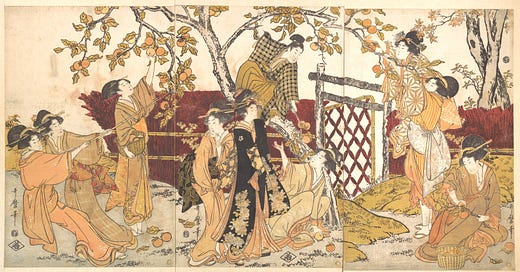



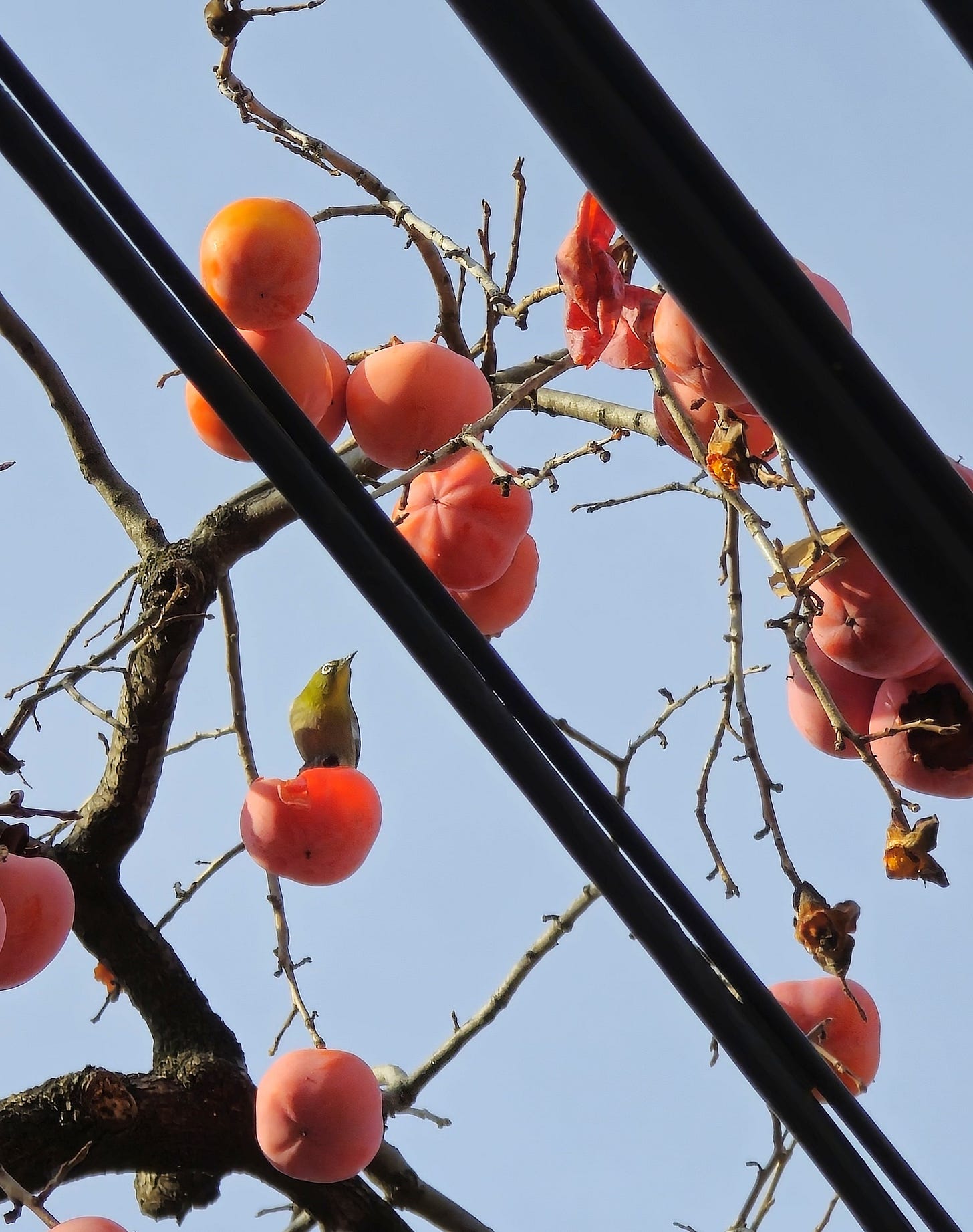
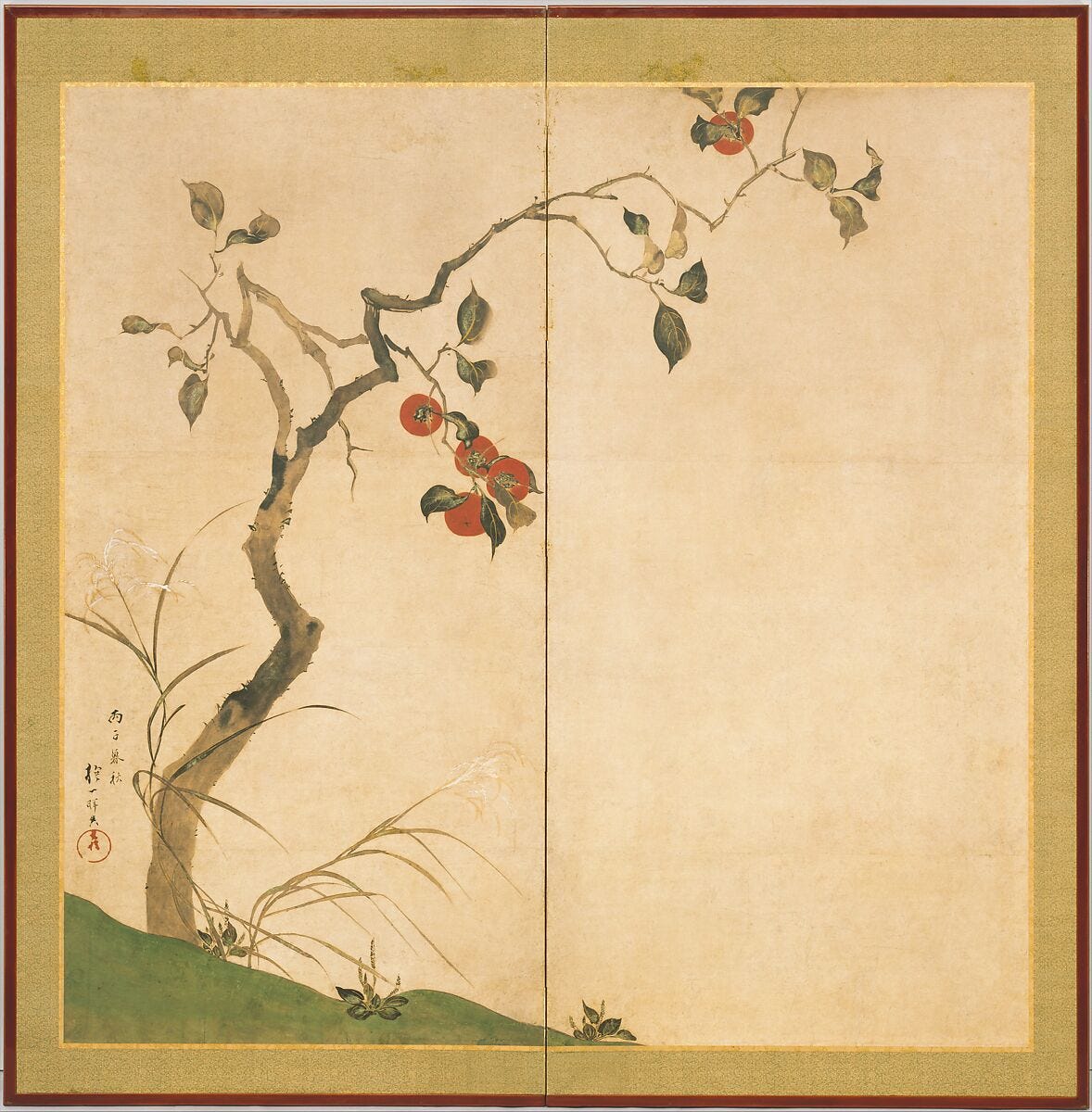
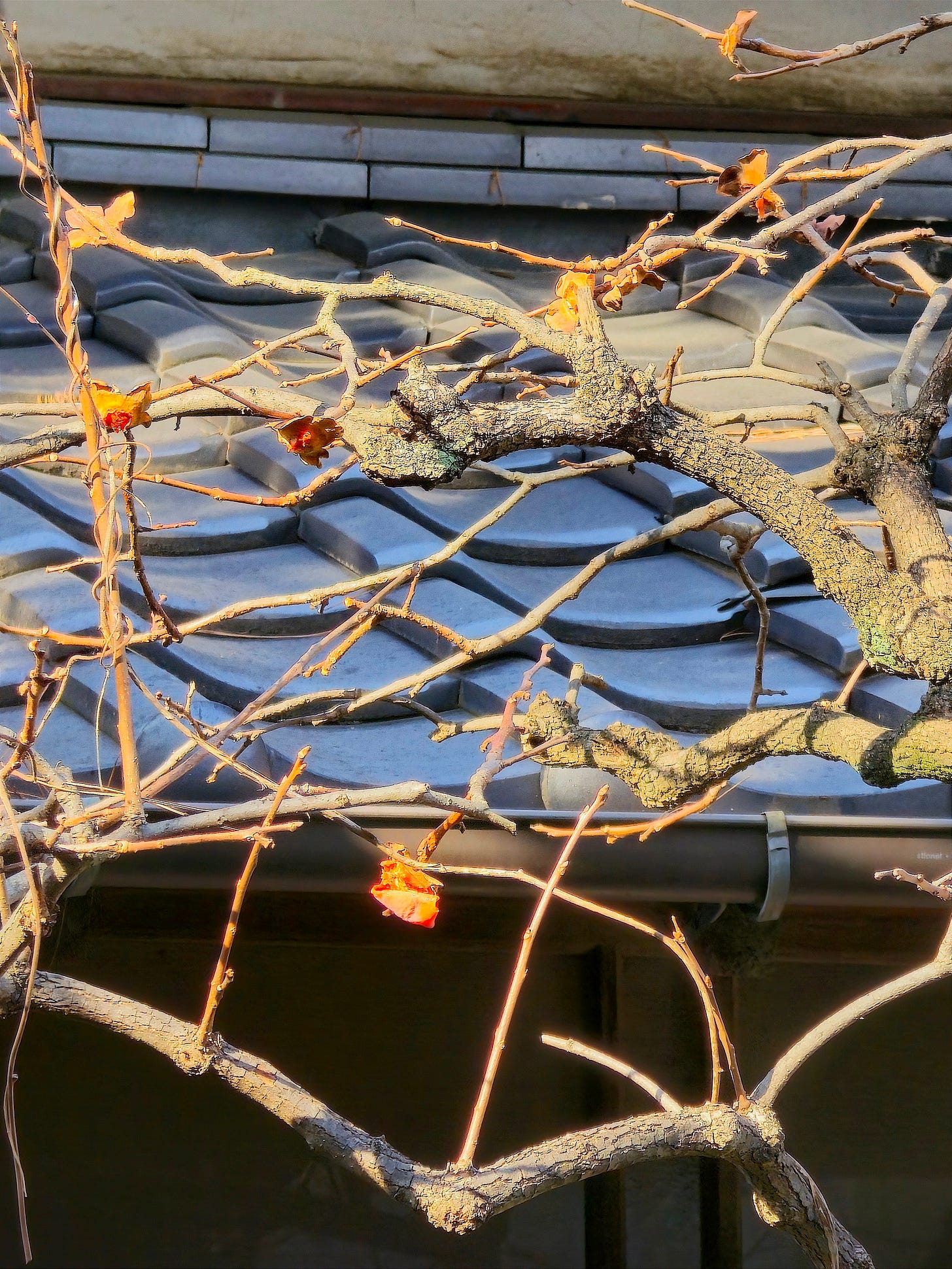
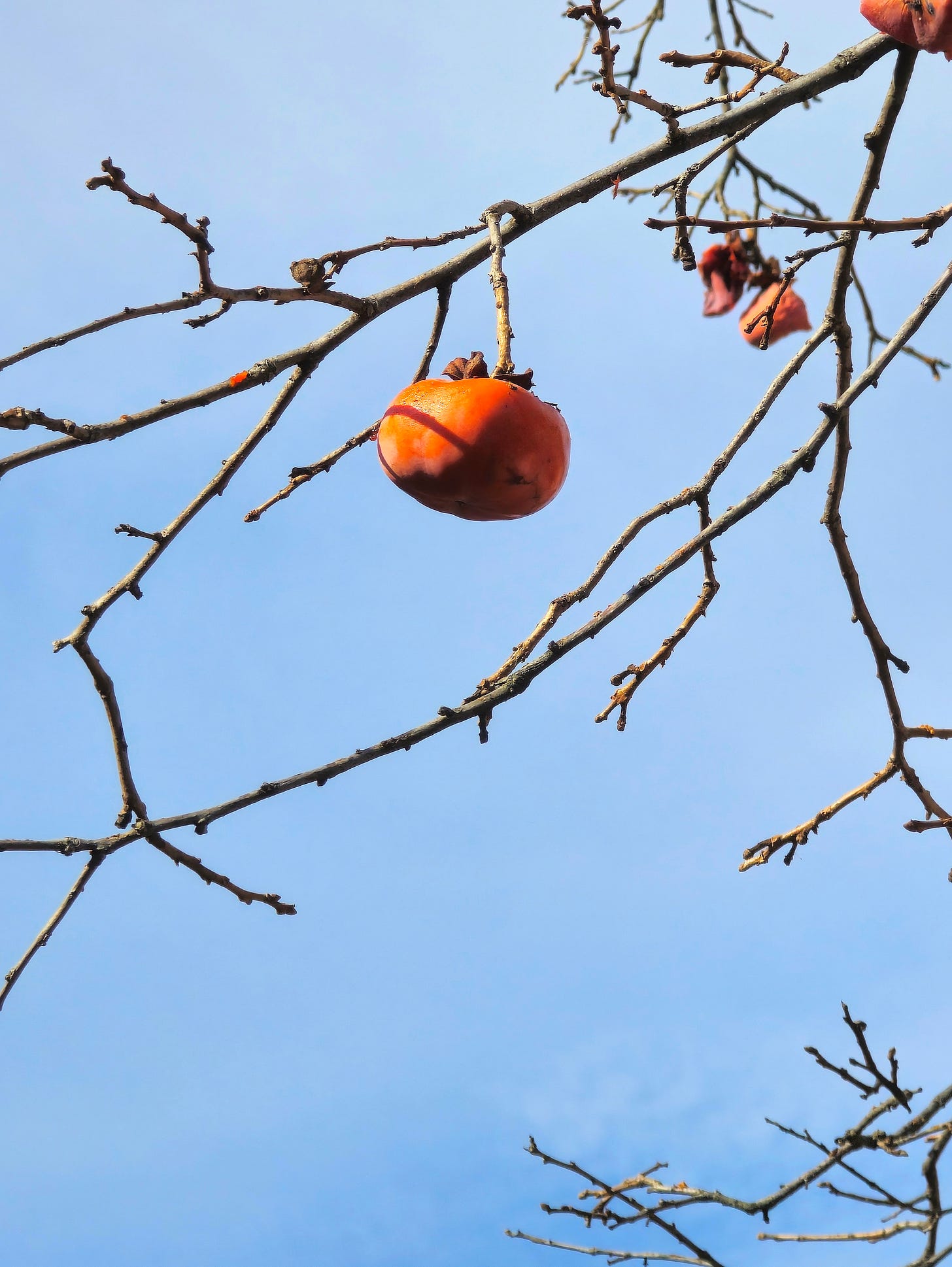
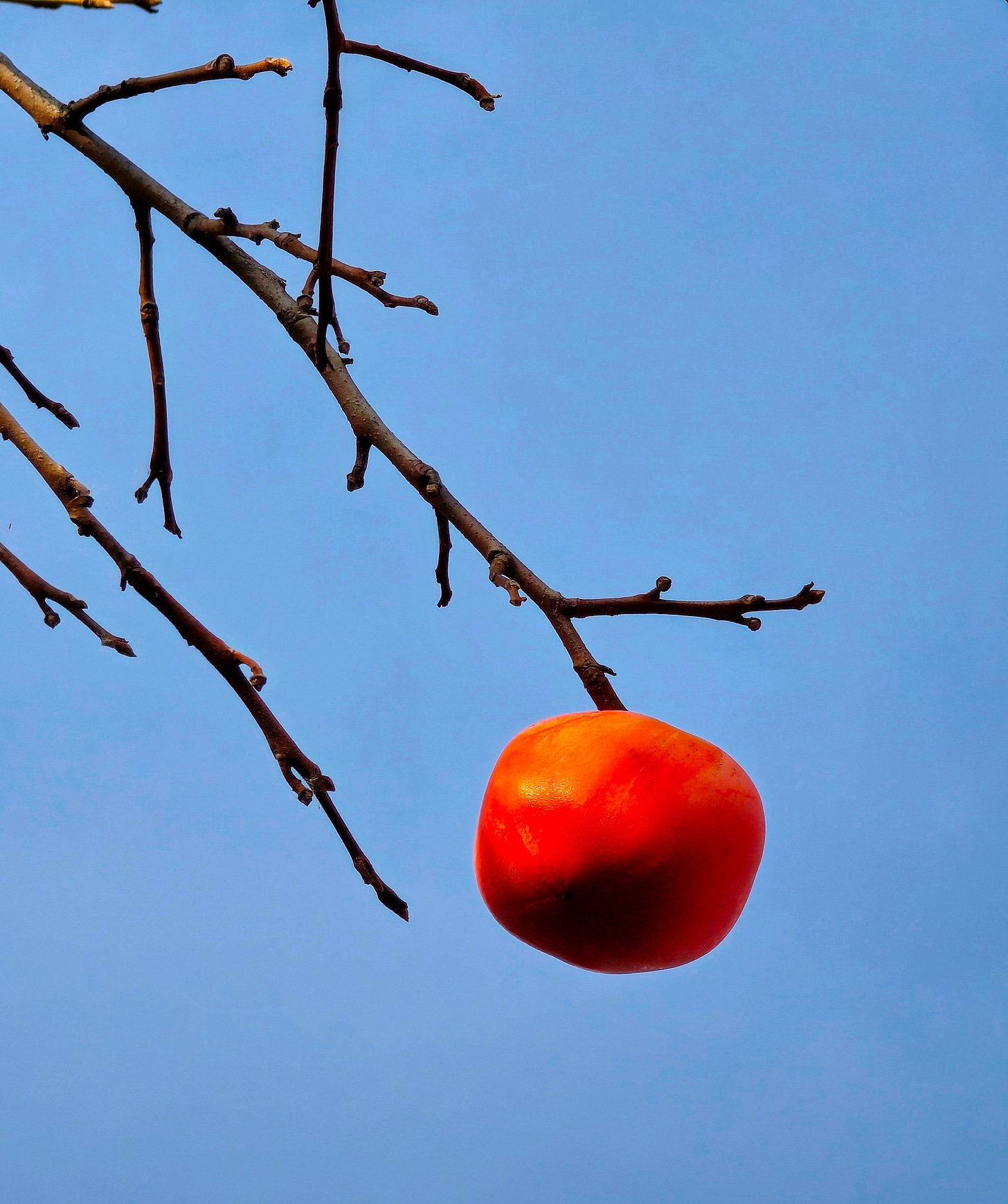
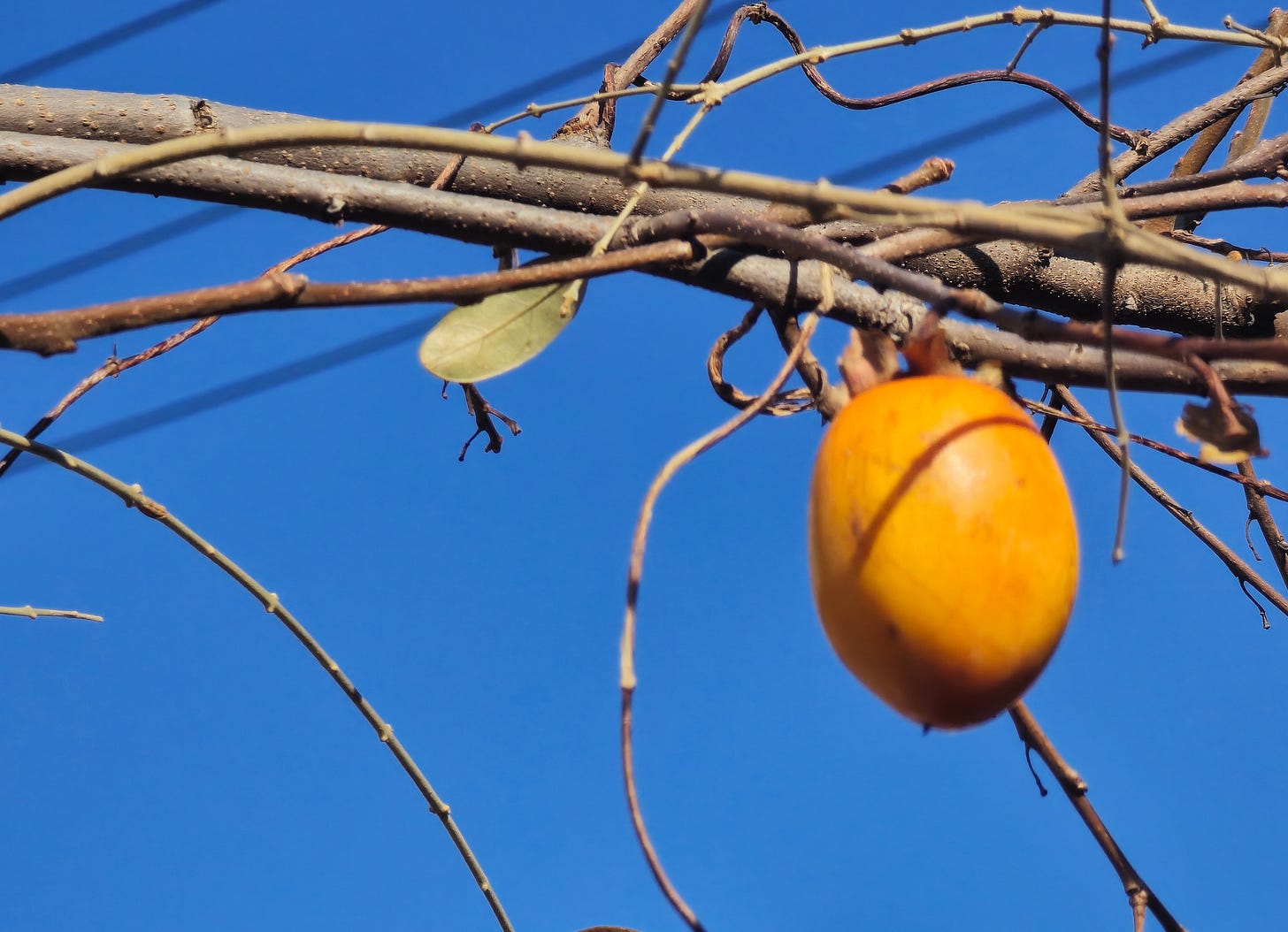
As a Devonian, did you know that Bideford AFC renamed its stadium 'Persimmon Homes Stadium?' https://www.devonlive.com/news/devon-news/bideford-afc-celebrates-new-sponsor-9835186 I was there on Boxing Day watching them play Willand Rovers.
Reminds of the commandment in the Torah about leaving the gleanings:
"When you reap the harvest of your land, do not reap to the very edges of your field or gather the gleanings of your harvest. Leave them for the poor and for the foreigner residing among you."